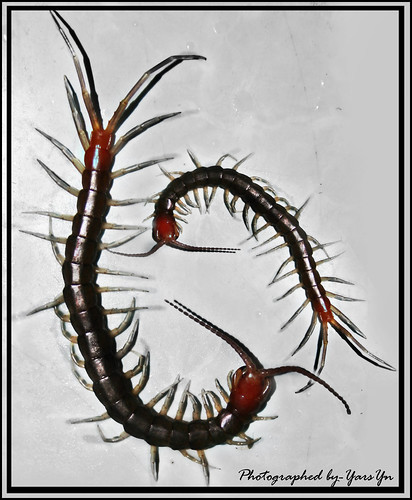
Chilopoda.
Centipedes
Physiology and Structure:
- The centipeds are elongated, multisegmented (usually 15-more than 118 segments), many-legged, tracheate arthropods. They have a distinct head and trunk. They posses a flattened body with a single pair of legs in each segment.
- Maxillipeds (posion claws) are on the first segment and are used for capturing preys.
- Millipedes and centipedes are usually classified together, however, millipedes do not have posion claws and have two pairs of legs in each segment.
 centipedes
centipedes  milipedes
milipedes
https://www.flickr.com/photos/yarsyn/2098683400/ https://flickr.com/photos/ambo_az/2177938258/
Clinical Syndromes:
- The bites of centipedes may be excruciating and cause swelling at the site of the bite. Reports of the effects of centipedes bites on humans are conflicting. One species, Scolopendra gigantea, which is found in Central and South America and the Galapagos Islands, reportedly has caused several death. With the exception of Scolopendra giga, the bite of other centipedes is harmless.
Treament, Prevention and Control:
- Local measures such as the application of compresses of sodium bicarbonate or solutions of Epsom salts can be used to treat centipedes' bite.
- Regular disposal of rubbish dwellings is one of the controls that are conducted regularly.